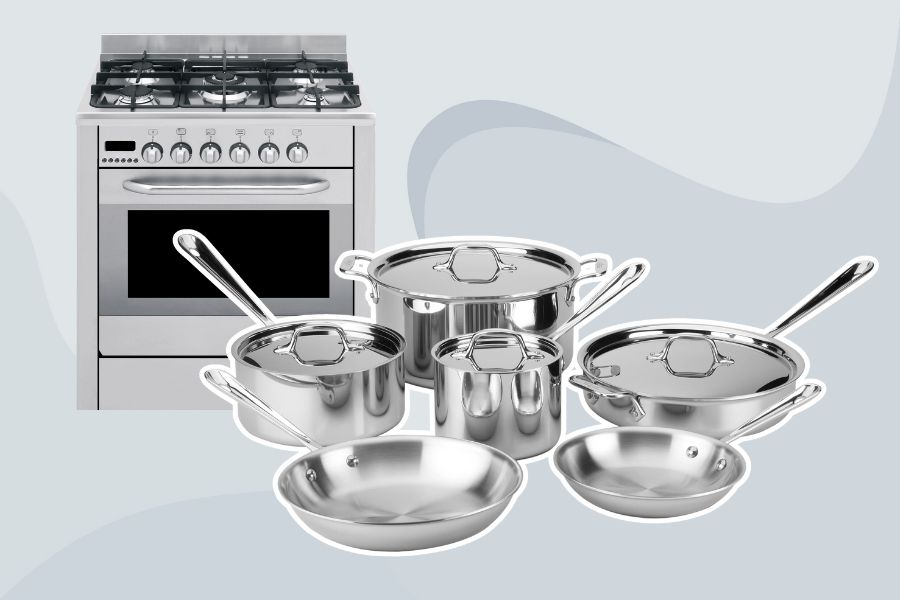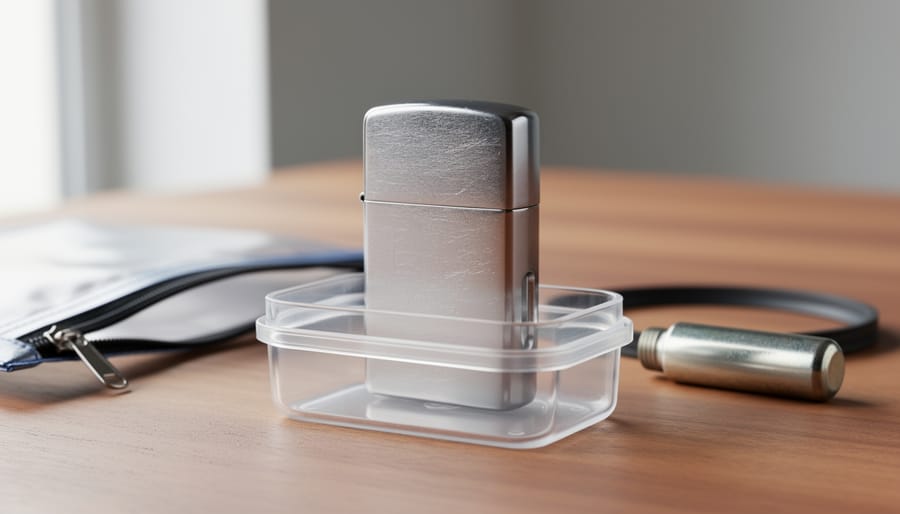Hey there, cooking enthusiasts! Ever found yourself in a pickle because you’ve invested in a shiny new set of induction cookware, only to realize you don’t have an induction cooktop? Yep, I’ve been there too. You’re staring at those beautiful pots and pans, wondering if they’re destined to collect dust.
Good news! You can use induction cookware on a gas stove. That’s right, those induction pots and pans can be safely used on your trusty gas burner. So, no need to avoid using induction cookware just because you have a gas range.
Stick around as we dive into the nitty-gritty of using induction cookware on gas stoves, the materials used in these pots and pans, and the advantages of using induction cookware even outside the induction cooking realm. Trust me, it’s a game-changer!
Induction Cookware and Gas Stoves
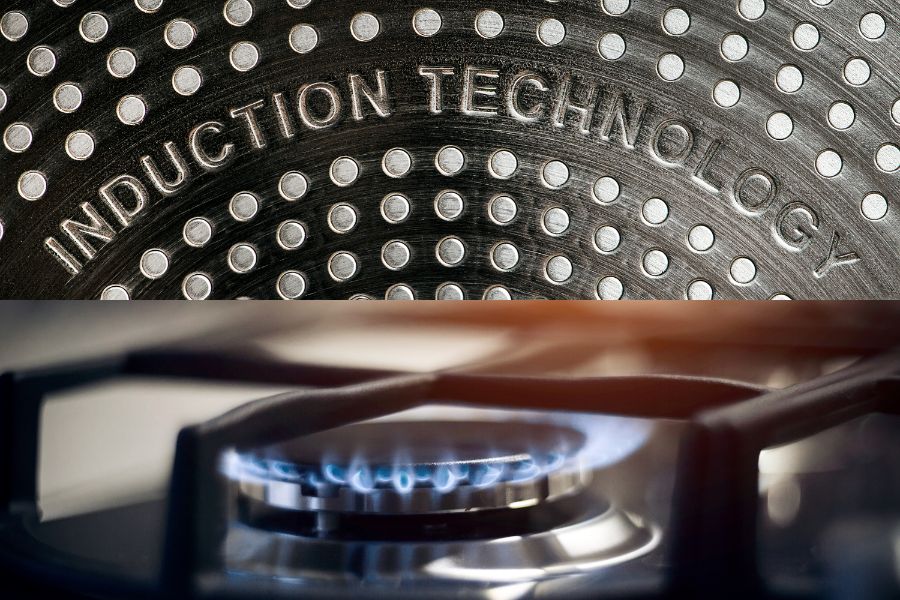
Gas stoves and induction cookware are two different types of cooking methods that require different types of cookware to function properly. Induction cookware uses an electromagnetic field to heat the cookware, while gas stoves use an open flame to heat up the cooking surface.
Induction cookware is made of ferromagnetic material, such as stainless steel or cast iron. When placed on an induction cooktop, the cookware becomes the heating element. The electromagnetic field produced by the induction cooktop causes the cookware to heat up quickly and evenly. This is because the electromagnetic field creates a magnetic current that runs through the cookware, generating heat directly in the cookware.
On the other hand, gas stoves use a flame to heat the cooking surface. The flame heats the burner, which heats the pot or pan. The heat is transferred from the burner to the pot or pan through conduction. This is the process of heat transfer through direct contact.
Because induction cookware and gas stoves are fundamentally different, they require different types of cookware. Induction cookware must be made of ferromagnetic material. This allows it to interact with the magnetic field produced by the induction cooktop. Non-ferromagnetic materials like aluminum, copper, and glass will not work on an induction cooktop.
On the other hand, gas stoves can use various types of cookware, including non-stick, stainless steel, and cast iron. However, not all types of cookware are suitable for use on a gas stove. For example, cookware with thin bottoms may warp or deform under high heat, while cookware with uneven bottoms may not heat up evenly.
Can You Use Induction Cookware on Gas Stoves?
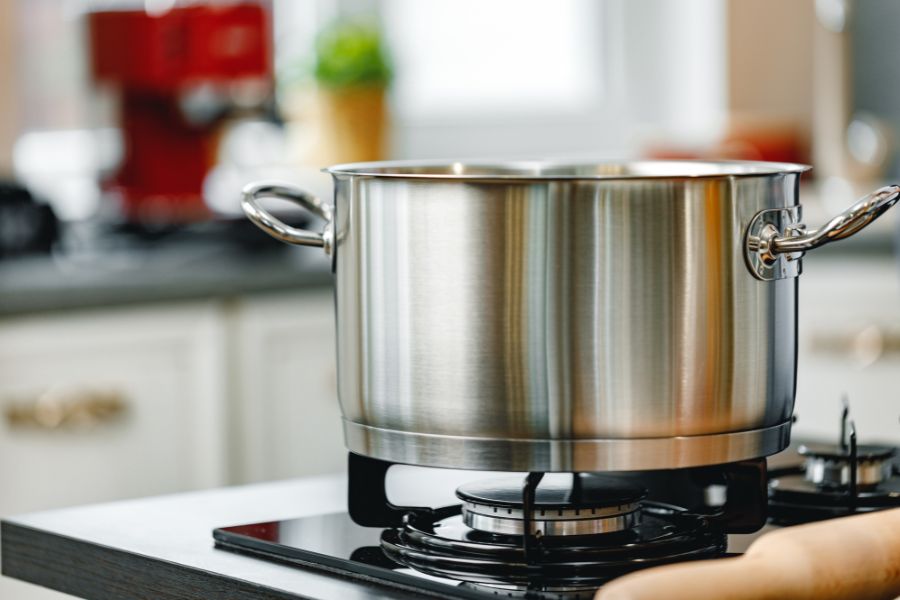
Absolutely, you can use induction cookware on gas stoves! While it’s true that induction pots and pans are made to work on induction cooktops, they can also be safely used on a gas cooktop. However, the cooking experience might differ a bit from what you’d get on an induction cooktop.
Induction cookware has a ferromagnetic base that works seamlessly with induction cooktops, which use electromagnetic fields for heating. But what if you don’t have an induction cooktop and want to use your induction pans on a gas or electric stove?
For electric stoves, the key is to ensure that the cookware has a flat bottom for optimal contact with the electric coil. This helps in even heat distribution, avoiding those pesky hot spots.
Conversely, using induction cookware on a gas stove can be a bit more challenging. Gas burners generate heat through an open flame, which may not offer the same level of precision as an induction cooktop. This could make it trickier to control the heat and achieve even cooking.
So, while using induction cookware on your gas stove is possible, be prepared for a learning curve as you adapt to the different heat sources.
How to Use Induction Cookware on Gas Stoves?
Using induction cookware on gas stoves can be tricky, as induction cookware is specifically designed to work with induction cooktops. However, it is possible to use induction cookware on gas stoves by following a few simple steps.
- Choose the Right Cookware: Induction cookware is made of ferromagnetic material, such as stainless steel or cast iron. This type of cookware will work best on a gas stove. Non-ferromagnetic materials like aluminum, copper, and glass will not work on a gas stove.
- Check the Bottom of the Cookware: Before using induction cookware on a gas stove, ensure that the cookware’s bottom is flat and even. Cookware with uneven bottoms may not make good contact with the gas burner, resulting in hot spots and uneven cooking.
- Adjust the Burner Size: Induction cookware is designed to work with specific burner sizes, and using a burner that is too small or too large can result in inefficient cooking. When using induction cookware on a gas stove, adjust the burner size to match the cookware size.
- Preheat the Cookware: To ensure even cooking, it is important to preheat the cookware before adding any ingredients. On a gas stove, preheat the cookware over medium-high heat for a few minutes before adding any food.
- Monitor the Heat: Gas stoves can generate a lot of heat. Therefore, monitoring the heat to avoid burning or overcooking food is important. When using induction cookware on a gas stove, starting with a lower heat setting is best and adjusting it as needed.
- Clean the Cookware: After using induction cookware on a gas stove, cleaning the cookware thoroughly to remove any grease or residue is important. Use a non-abrasive cleaner and a soft sponge to avoid scratching the cookware’s surface.
Using induction cookware on a gas stove requires a bit of extra care and attention. By choosing the right cookware, checking the bottom of the cookware, adjusting the burner size, preheating the cookware, monitoring the heat, and cleaning the cookware, you can ensure efficient and effective cooking on a gas stove.
What Type of Induction Cookware Can I Use on Gas Stoves?
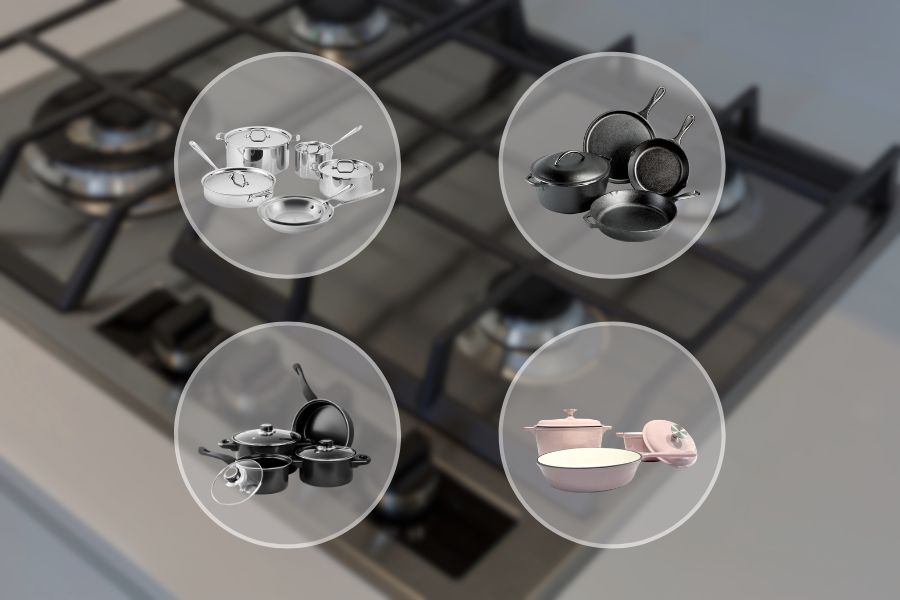
Navigating the world of cookware can be a bit confusing, especially when trying to figure out which induction cookware you can use on gas stoves. While induction pots and pans are engineered for induction cooktops that use electromagnetic fields, gas stoves operate with an open flame. So, what’s the verdict?
For a seamless cooking experience on a gas stove, opt for induction cookware made from ferromagnetic materials like stainless steel or cast iron. These materials are compatible with induction and work well with gas burners, as they can effectively absorb and distribute the heat from the flame.
Here’s a quick rundown of induction-friendly pans and pots that you can safely use on a gas stove:
- Stainless Steel Cookware: A go-to for many, stainless steel cookware is durable and versatile. It’s a great fit for gas stoves, provided it has a flat bottom for optimal contact with the gas burner.
- Cast Iron Cookware: Known for its durability and heat retention, cast iron is another excellent option for gas stoves. It’s particularly good for high-temperature cooking tasks like searing and frying.
- Carbon Steel Cookware: If you’re looking for something lighter but still effective, carbon steel cookware heats up quickly and evenly. It’s ideal for tasks like stir-frying and sautéing.
- Enamel Cookware: With its non-reactive and easy-to-clean surface, enamel cookware is another viable option. Just ensure the base material is ferromagnetic to make it compatible with your gas stove.
You can enjoy the advantages of induction pans and pots even if you don’t have an induction cooktop by choosing the right type of induction cookware.
Advantages of Using Induction Cookware on Gas Stoves
Wondering why you should consider using induction pots and pans on your gas stove? Well, there are some compelling advantages to using induction cookware, even outside of the induction cooking realm:
- Quick Heat-Up: One of the standout features of induction cookware is its ability to heat up rapidly. As a result, you can cut down your cooking time. This is a lifesaver when you’re racing against the clock.
- Precision Cooking: Induction cookware allows for more accurate temperature control than traditional cookware. This means you can achieve the perfect doneness for your dishes. This is because induction pots and pans respond swiftly to temperature adjustments.
- Energy Efficiency: Induction cookware is designed to be energy-efficient, focusing the heat directly on the cookware itself rather than the surrounding area. This can translate to some savings on your energy bills over time.
- Enhanced Safety: Using induction cookware on a gas stove is generally safer than regular cookware. While it doesn’t produce an open flame, it often comes with safety features like automatic shut-off, minimizing the risk of accidents.
- Ease of Cleaning: One of the perks of induction cookware is that it’s easy to clean. Since it doesn’t generate smoke or leave behind stubborn residues, a simple wipe-down with a damp cloth usually does the trick.
You can enjoy these benefits and elevate your cooking experience by opting for induction cookware on your gas stove.
Disadvantages of Using Induction Cookware on Gas Stoves
While the perks of using induction cookware on gas stoves are enticing, it’s only fair to discuss some of the drawbacks you might encounter:
- Selective Compatibility: Induction pots and pans are tailored for induction cooktops. This means not all will be compatible with your gas stove. You’ll need to opt for cookware made from ferromagnetic materials like stainless steel or cast iron to ensure they work with gas burners.
- Potential for Uneven Heating: Gas stoves can sometimes be culprits of uneven heat distribution, leading to hot spots and, unfortunately, burnt meals. This issue is exacerbated by using lightweight or thin induction cookware, which can warp over time.
- Sluggish Heat-Up: While induction cookware heats up quickly on induction cooktops, it’s not always the same when used on gas stoves. You might find that reaching your desired cooking temperature takes a bit longer.
- Trickier Temperature Control: Though gas stoves offer better temperature control than electric stoves, they still fall short of the precision offered by induction cooktops. This can make cooking dishes that require exact temperatures a bit more challenging.
- Fire Safety Concerns: While induction cookware is generally safer, the open flame of a gas stove presents its own risks. Items like kitchen towels or curtains can easily catch fire if you’re not cautious.
Being aware of these disadvantages can help you make an informed decision about whether or not induction cookware is the right fit for your gas stove cooking needs.
Closing Thoughts
Using induction cookware on gas stoves comes with a mixed bag of pros and cons. On the upside, you get quicker heat-up times, precise temperature control, and energy efficiency.
Not to mention, induction pots and pans are generally safer and easier to clean. However, challenges include limited compatibility with gas burners, the potential for uneven heating, and the inherent fire risks of using a gas stove.
Your choice to use induction cookware on a gas stove will ultimately hinge on your cooking preferences and needs. Induction cookware could be a great addition to your kitchen if you’re after speed, precision, and energy savings. On the other hand, sticking to what you know might be your best bet if you’re content with your traditional cookware and feel at ease with your gas stove’s temperature control and safety features.
Whatever you decide, the key is to choose cookware that’s compatible with your stove type and always follow safety guidelines. With thoughtful selection and proper usage, induction cookware and gas stoves can provide satisfying and efficient cooking experiences.
Frequently Asked Questions
Can I Use Any Induction Cookware on a Gas Stove?
No, not all types of induction cookware are compatible with gas stoves. Only cookware made of ferromagnetic material, such as stainless steel or cast iron, will work on gas stoves.
Is It Safe to Use Induction Cookware on a Gas Stove?
It is generally safe to use induction cookware on a gas stove. However, there is still a potential fire hazard with gas stoves. It is important to exercise caution and follow proper safety protocols while cooking.
Can I Use Non-stick Induction Cookware on a Gas Stove?
Yes, non-stick induction cookware made of ferromagnetic material can be used on a gas stove. However, non-stick coatings can deteriorate faster on gas stoves due to uneven heating. As a result, you may need to replace your cookware more frequently.
Will Using Induction Cookware on a Gas Stove Affect the Taste of My Food?
No, using induction cookware on a gas stove will not affect the taste of your food. The cooking method and ingredients you use will have a greater impact on the taste of your food.
Can I Use Copper or Aluminum Induction Cookware on a Gas Stove?
No, copper and aluminum cookware are incompatible with induction cooking technology and unsuitable for use on gas stoves.
Is Induction Cookware More Expensive Than Traditional Cookware?
Induction cookware can be more expensive than traditional cookware, but the price depends on the type and brand of cookware you choose. However, investing in quality induction cookware can be worth it for its benefits.
Can I Clean My Induction Cookware in the Dishwasher?
While some induction cookware is dishwasher safe, it is best to check the manufacturer’s instructions before cleaning your cookware in the dishwasher. Some types of cookware may require hand-washing to maintain their quality and longevity.
Can Induction Cookware Be Used on an Electric or Gas Stove?
Yes, induction cookware can be used on electric and gas stoves, although there are some considerations for each type of stove to ensure optimal cooking performance.
Is It Safer to Use Induction Pans on a Gas Stove Compared to Traditional Cookware?
Induction pans are generally safer due to features like even heat distribution and, sometimes, automatic shut-off. However, the safety also depends on how well you manage the open flame of a gas stove.
Can I Use Induction Pans on Gas Stoves Without Any Issues?
You can use induction pans on gas stoves, but choosing pans made of ferromagnetic materials like stainless steel or cast iron is essential for the best results. Also, be aware of potential uneven heating.
Are There Any Types of Induction Cookware That Cannot Be Used on Electric Stoves?
You can use most induction cookware on electric stoves, but it’s crucial to have a flat-bottomed pan for better contact with the electric coil. This ensures even heating and better cooking results.
What Makes Induction Cookware Safer to Use Compared to Regular Pots and Pans?
Induction cookware is designed for quick and even heating, and some come with safety features like automatic shut-off. These features make them generally safer to use compared to traditional cookware.

